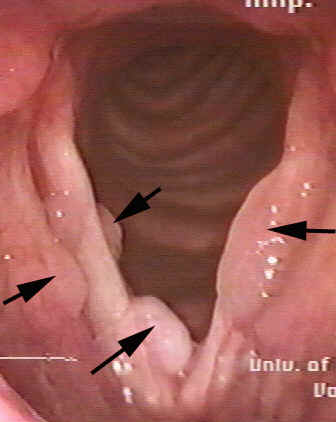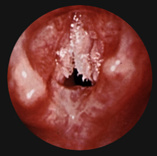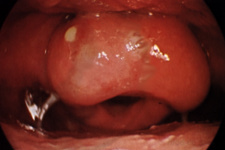Nursing Pharmacology Chapter 12: Anxiolytics and Sedative-Hypnotics
|
|
|
Preoperative Medication: Sedative Hypnotics and Other Agents and Issues
-
Overview:
-
Most commonly used sedative/anxiolytic
-
Anxiolytic effectiveness is observed at dosages which do not result in cardiopulmonary depression or excessive sedation
-
Certain benzodiazepines also exhibit significant anterograde amnesia (amnesia subsequent to drug administration).
-
Examples of these benzodiazepines include midazolam (Versed) and lorazepam (Ativan).
-
These agents may also cause, on predictably, some degree of retrograde amnesia as well.
-
-
Benzodiazepines may also be used the night before schedule surgery in management of pre-surgical insomnia-- examples include lorazepam (Ativan), temazepam (Restoril), & triazolam (Halcion)
-
Sometimes benzodiazepines used pre-surgically can result in prolonged and excessive sedation. Patients receiving lorazepam (Ativan) at high dosages (total dose > 4 mg orally at 5 ug/kg) may be most susceptible to this excessive sedation.
-
A benzodiazepine antagonist, flumazenil (Romazicon) may be used to reverse benzodiazepine effects.
-
-
Intramuscular injection of diazepam (Valium) may be painful because diazepam (Valium) is dissolved in the irritating solvent propylene glycol; intramuscular injections of midazolam (Versed) does not cause local irritation since the chemical characteristics of midazolam (Versed) do not require the use of propylene glycol as a solvent (an aqueous solvent is used).
-
-
 Adverse Effects: benzodiazepines
Adverse Effects: benzodiazepines-
Major adverse effects
-
Respiratory depression
-
Reduction in cognitive & motor function
-
-
Inpatient considerations:
-
If cognitive function need not be immediately returned to normal following procedure, lorazepam (Ativan) (oral) may be appropriate the morning of surgery
-
-
Outpatient considerations:
-
Diazepam (Valium) (oral)
-
Midazolam (Versed) (IV), particularly appropriate
-
-
Factors/conditions which increase likelihood of preoperative excessive sedation associated with the use of benzodiazepines and other sedative hypnotics:
-
Infancy, advanced age (elderly patients), chronic debilitating disease or malnutrition, pregnancy, renal dysfunction, hepatic dysfunction, pulmonary dysfunction, adrenal insufficiency, myasthenia gravis, myotonia, sickle cell disease, acute drug/ethanol intoxication5.
-
-
-
3Midazolam (Versed) & diazepam (Valium) comparisons:
-
Pharmacokinetic issues:
-
Midazolam (Versed): short half-life (1-4 hours); diazepam (Valium), including active metabolites: long half-life 20-100 hours
-
In elderly patients, diazepam (Valium) half-life may be extended to several days (midazolam (Versed) half-life may be extended by eight hours)
-
-
Diazepam (Valium) metabolites: oxazepam which is Serax and desmethyldiazepam are active
-
Weak midazolam (Versed) metabolites suggest that in the outpatient setting, midazolam (Versed) would be preferred. Quicker recovery & greater amnesia have been found with midazolam (Versed).
-
Midazolam (Versed) in combination with opioids: cautious use in view of possible respiratory depression leading to inadequate oxygenation. Nalbuphine (0.2 mg/kg) & midazolam (Versed) (0.09 mg/kg) may be the most appropriate combination in order to minimize respiratory complications at least in patients undergoing minor oral surgery
-
-
Pediatric uses of Midazolam (Versed)3:
-
Oral midazolam (Versed) (0.5 mg/kg) is useful in preventing "facemask phobia"
-
Following oral administration (midazolam (Versed), 0.5 mg/kg) the child is typically easily separated from parents and willing to accept monitoring and facemask
-
At a midazolam (Versed) dosage of 0.75 mg/kg, most pediatric patients {90%} undergo induction without crying or combative behavior
-
At these dosages, midazolam (Versed) effects last < 1 hour and do not appear to prolong recovery
-
Midazolam (Versed) administration (occasionally in combination with atropine, e.g.) can be facilitated by mixing with cherry syrup or with a melted popsicle.
-
Special circumstances:
-
In pediatric patients with congenital heart disease, midazolam (Versed) may improve oxyhemoglobin saturation in most cases; however in some children with cyanotic heart disease (3 of 17 tested) desaturation may occur with a reduction of greater than 10%.
-
 Accordingly, pulse oximetry monitoring is essential.
Accordingly, pulse oximetry monitoring is essential.
-
-
-
Children with a compromised airway: midazolam (Versed) premedication would not be advised because apnea following midazolam (Versed) administration may be associated with an inability to mask ventilate.
-
Crying itself (which may be made less likely by midazolam (Versed) administration) can worsen airway obstruction in the presence of, for example, epiglottitis or laryngeal papillomatosis, a condition of multiple papilloma grows on the larynx caused by a viral infection-this condition occurs with approximately equal frequency and children and adults.
Laryngeal papillomatosis, Epiglottitis
-
-
|
|
|
Epiglottis (with Abscess)
|
-
Intranasal midazolam (Versed) administration (0.2 mg/kg)
-
Less patient cooperation required (appropriate for combative children)
-
Quicker onset compared to oral Route of Administration
-
Occasionally (rare), midazolam (Versed) made evoked a hyperexcitability reaction-some anesthesia providers may wish to employ midazolam (Versed) only with relatively uncooperative patients
-
-
3Lorazepam (Ativan)
-
Overview
-
No active metabolites; short half-life (approximately 15 hours)
-
Half-life not influenced by patient age
-
-
Pharmacokinetic/metabolism characteristics
-
Reduced, compared to diazepam (Valium), rate of CNS access secondary to relatively less lipophilicity
-
Onset of action for both diazepam (Valium) & lorazepam (Ativan) is similar, about 30-60 minutes
-
CNS effects e.g. psychomotor impairment, may be observed for 12 hours following the single lorazepam (Ativan) dose
-
Metabolism:
-
Glucuronidation (conjugation) followed by renal excretion
-
Glucuronidation reactions tend to be less susceptible to effects of aging or hepatic disease, i.e. typically no significant change in half-life as a function of age or liver dysfunction
-
-
-
Comparing lorazepam (Ativan) and diazepam (Valium):
-
Dosage -- 2 mg orally of lorazepam (Ativan) is about equal to 10 mg oral diazepam (Valium)
-
Sedation following a single 2 mg dose less about five hours
-
At higher dosages, such as 5 mg, anterograde amnestic effects may last up to about eight hours
-
Disorientation following the 5 mg dose may last as long as 17 hours; this finding suggests that the upper dosage limit for lorazepam (Ativan) perhaps should be 4 mg
-
Diazepam (Valium) --
-
At the 10 mg level: typically no amnesia
-
At the 20 mg level, about 30% of patients exhibit amnesia {4 mg of lorazepam (Ativan) (oral) results in an amnesia frequency of > 70%}
-
-
-
 Lorazepam (Ativan) uses:
Lorazepam (Ativan) uses:
-
Appropriate for patients undergoing major surgical procedures which will be followed by intensive care unit monitoring
-
Advantage for seriously ill (critically ill) patients include:
-
Absence of myocardial depression or vascular smooth muscle relaxation even at doses above 9 mg
-
-
Concerning typical premedication in patients with heart disease, sedative and anxiolytic action of flurazepam (Dalmane) (orally administered; 0.06 mg/kg, administered 90 minutes prior surgery) was comparably effective to a more traditional premedication regimen consisting of intramuscular morphine (0.1 mg/kg) combined with scopolamine.
-
-
References
-
1Preoperative Medication in Basis of Anesthesia, 4th Edition, Stoelting, R.K. and Miller, R., p 119- 130, 2000)
-
Hobbs, W.R, Rall, T.W., and Verdoorn, T.A., Hypnotics and Sedatives; Ethanol In, Goodman and Gillman's The Pharmacologial Basis of Therapeutics,(Hardman, J.G, Limbird, L.E, Molinoff, P.B., Ruddon, R.W, and Gilman, A.G.,eds) TheMcGraw-Hill Companies, Inc., 1996, pp. 364-367.
-
3Sno E. White The Preoperative Visit and Premedication in Clinical Anesthesia Practice pp. 576-583 (Robert Kirby & Nikolaus Gravenstein, eds) W.B. Saunders Co., Philadelphia, 1994
-
4John R. Moyers and Carla M. Vincent Preoperative Medication in Clinical Anethesia, 4th edition (Paul G. Barash, Bruce. F. Cullen, Robert K. Stoelting, eds) Lippincott Williams & Wilkins, Philadelphia, PA, 2001
-
5Kathleen R. Rosen and David A. Rosen, "Preoperative Medication" pp. 61-70 in Principles and Procedures in Anesthesiology (Philip L. Liu, ed) J. B. Lipincott Company, Philadelphia, 1992


